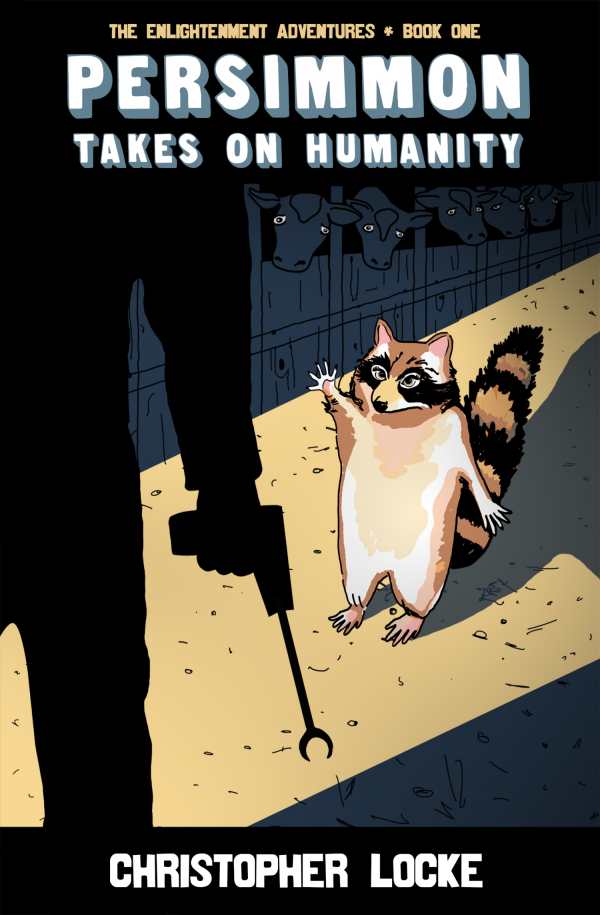Persimmon Takes On Humanity
Animals join forces, challenge anthrosupremacy, and triumph in Persimmon Takes on Humanity, a novel with a powerful message.
In Christopher Locke’s new-adult novel Persimmon Takes on Humanity, a motley crew of heroic forest creatures forms an alliance to rescue animals from cruel human practices.
Persimmon is a plucky raccoon who never turns down a chance to do something adventurous. And all her life, she has heard cautionary tales about the humans who live beyond the Oak Tree Forest, but she has never seen them for herself. When another raccoon tells Persimmon that he’s been there and seen a creature that no one has ever seen before, she decides she must see it, too.
Persimmon—with her best friend Derpoke, an opossum, and her younger brother, Scraps—goes to the wood’s end to have a look. What they see is a veal farm, and what they hear are the cries of the suffering calves. Persimmon vows to free the calves; indeed, she and her all-animal rescue group end up vowing to save captive animals wherever they find them.
Persimmon’s devotion is admirable if a bit authoritarian. She is a single-minded champion of diversity who welcomes raccoons, squirrels, dogs, minks, and a possum into her cohort. Though her aim is never to harm humans, humans nevertheless meet gruesome deaths at the claws, teeth, and trunks of her crew. In fact, the third rescue mission ends in a swashbuckling battle that involves a lot of violence; both sides, animals and humans, suffer devastating losses.
Persuasive arguments and eye-opening observations arise throughout this animals-versus-humans tale, which is moved along by its necessary perspective shift: here, humans are exotic and dangerous lifeforms, described with some of the same language that humans use to describe animals. The technique is powerful and complacency-shattering. However, the relentless hammering home of the issues with people’s inhumane practices crushes the book’s argumentative potential, while the decision to divide Persimmon’s crusade across three bloody missions—to a veal farm, a mink farm, and a circus—ends up deadening her message, rather than strengthening it.
This divide between intent and delivery is widened by the fact that the cast is absent compassionate adults, while children within it are dismissed as shallow and ignorant of the suffering that animals endure at the hands of humans. Further, Persimmon ends up calling upon her fellow animals to stop eating other animals—a vegan directive with little chance of success in her ecosystem, where carnivores are likely to remain carnivores. The narrative’s switches between tenses are jarring as well.
Animals join forces, challenge anthrosupremacy, and triumph in Persimmon Takes on Humanity, a new-adult novel with a powerful message.
Reviewed by
Randi Hacker
Disclosure: This article is not an endorsement, but a review. The publisher of this book provided free copies of the book and paid a small fee to have their book reviewed by a professional reviewer. Foreword Reviews and Clarion Reviews make no guarantee that the publisher will receive a positive review. Foreword Magazine, Inc. is disclosing this in accordance with the Federal Trade Commission’s 16 CFR, Part 255.

